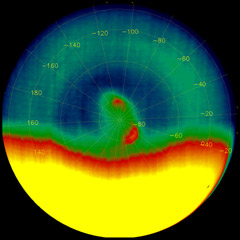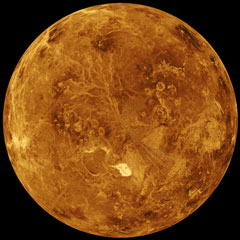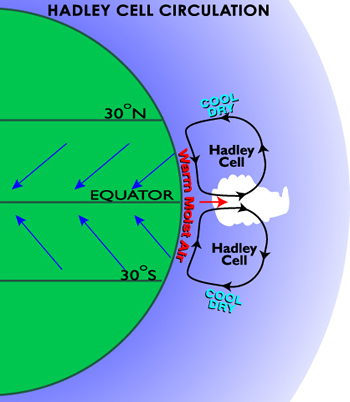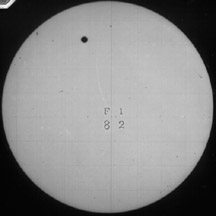Click on image for full size
Image courtesy ESA/VIRTIS/INAF-IASF/Obs. de Paris-LESIA.
The Polar Atmosphere of Venus
Venus has odd, swirling vortices in its atmosphere above each of the planet's poles. These vortex structures were first detected over the North Pole by NASA's Pioneer Venus Orbiter in 1978. The European Space Agency's (ESA) Venus Express discovered, and has been observing, vortices over the South Pole since it went into orbit in April 2006.
Polar vortices are actually common features on planets with atmospheres. A polar vortex forms in the winter at each pole on Earth. Saturn, too, has polar vortices. The vortices on Venus are peculiar because they are double vortices; each polar vortex has two "eyes" which the winds and clouds swirl around. Scientists don't fully understand the Venusian vortices and are continuing to study their behaviors.
Large, bright clouds periodically form over the poles. The clouds sometimes appear and dissipate within a few hours. These bright clouds can increase the albedo of the polar atmosphere by 30% as they reflect more sunlight back into space. Some scientists think that upwelling of sulfur dioxide from the lower atmosphere, stirred by the polar vortices, creates these clouds.
The polar vortices on Venus are surrounded by "collars" of colder air. These collars may form some sort of boundary between the polar vortices and the flow of the atmosphere at lower latitudes. Venus, like Earth, has a Hadley cell atmospheric circulation pattern on either side of the equator. The Venusian Hadley cell extends nearly to the poles, reaching about 60° north and south latitude (as compared to ~30° on Earth). The cold collars appear between about 60° and 70° latitude.
Venus has high-speed winds in its upper cloud deck, about 60-70 km (37-43 miles) above the planet's surface. At equatorial latitudes these winds rip along at 360 km/hr (224 mph). Poleward of 50° latitude the wind speeds quickly decline, dropping to zero at the poles.
The surface temperatures on Venus are extremely high, around 464° C (867° F). The incredibly dense atmosphere spreads this heat evenly over the surface and keeps it very steady through time. The nighttime side of the planet is just as hot as the daytime side, and poles of Venus are just as scorching hot as the equator. The spin axis of Venus is tilted a mild 3° (compared to Earth's 23°). Due to this minimal tilt and the thick atmosphere, there are no seasons on Venus. Wherever you go... and whenever you go... on Venus, you can count on it being hot!














